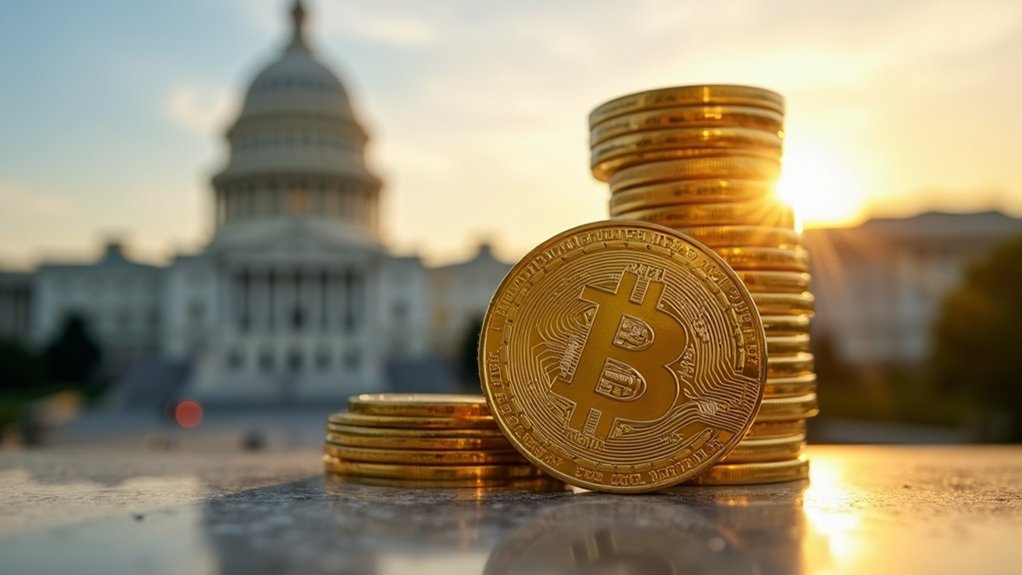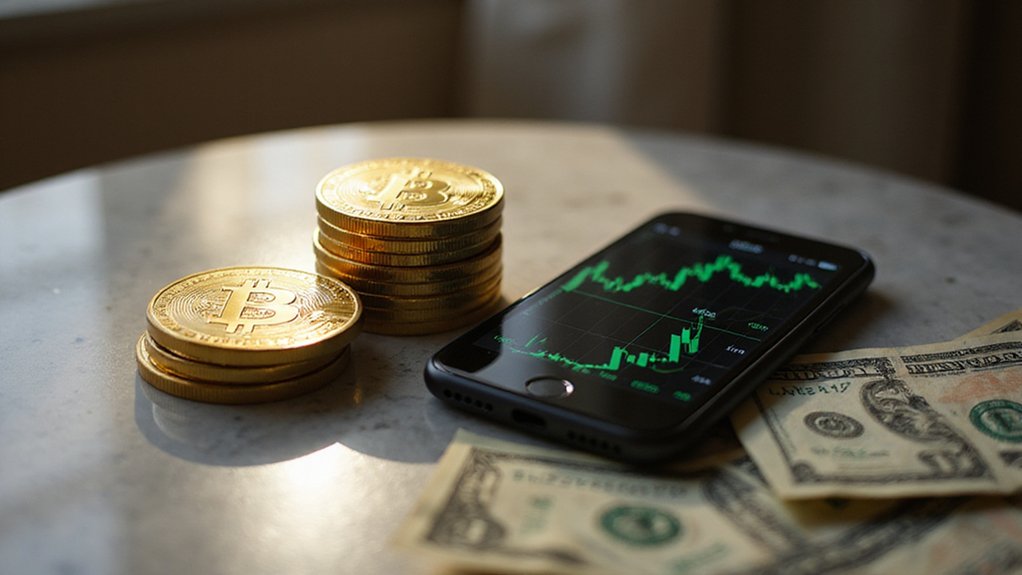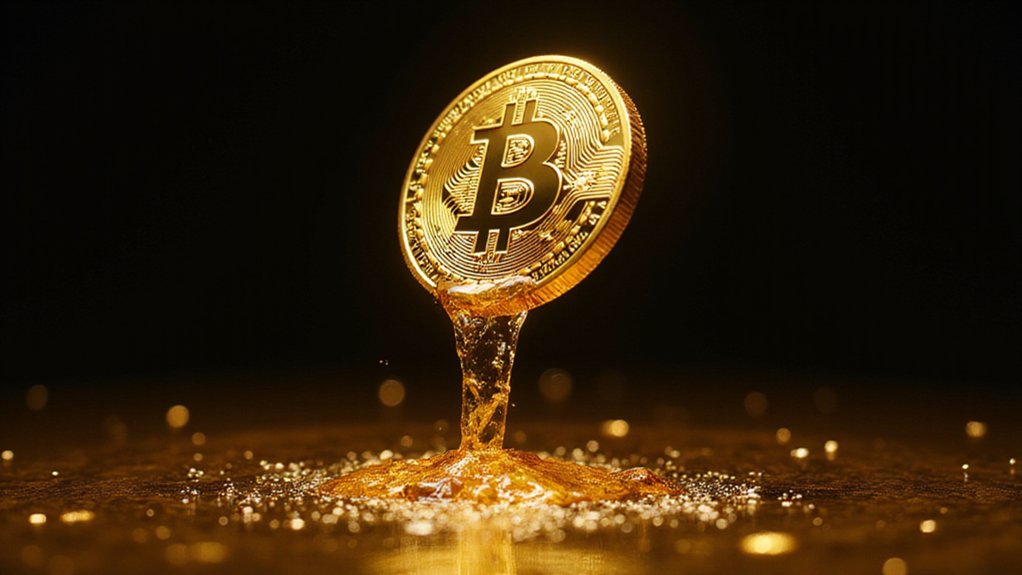Optimism—that perennial driver of speculative fervor—has once again seized the cryptocurrency markets as Bitcoin approaches what analysts consider an inevitable milestone: the $120,000 threshold. While congressional legislative machinations rarely correlate directly with cryptocurrency price movements, the confluence of institutional adoption and macroeconomic uncertainty has created conditions remarkably conducive to Bitcoin’s ascent.
Speculative optimism grips cryptocurrency markets as Bitcoin nears the psychologically significant $120,000 milestone amid institutional adoption and macroeconomic turbulence.
The digital asset’s recent performance exemplifies this momentum, having established a new all-time high of approximately $111,924 in May 2025 before settling into a consolidation pattern between $106,800 and $112,000. This relatively narrow trading range, accompanied by diminished volatility, suggests underlying market stability that historically precedes significant price movements—though predicting direction remains the eternal challenge of cryptocurrency speculation.
Institutional investors continue their relentless accumulation campaigns, with entities like MicroStrategy maintaining their aggressive Bitcoin acquisition strategies. The introduction of U.S. spot Bitcoin ETFs has facilitated unprecedented capital inflows, creating what Bernstein analysts describe as the foundation for a potential rally to $200,000 by year-end. Such forecasts, while ambitious, reflect genuine structural changes in Bitcoin’s investor base rather than mere speculative enthusiasm.
Quantitative models present an intriguing spectrum of possibilities, ranging from conservative estimates of $136,000 to more audacious projections approaching $285,000 by December 2025. The stock-to-flow model, that controversial yet persistent forecasting tool, suggests an average price of $420,000 between 2024 and 2028—figures that strain credulity yet align with historical precedent for Bitcoin’s cyclical behavior.
Macroeconomic factors complicate this narrative considerably. Interest rate uncertainties, geopolitical tensions, and tariff impositions create cross-currents that could either accelerate Bitcoin’s safe-haven appeal or dampen institutional enthusiasm. The cryptocurrency’s slightly diminished market dominance (75% of top 100 cryptocurrencies outperformed Bitcoin recently) suggests investors are diversifying within the digital asset ecosystem.
Whether congressional bills specifically catalyze Bitcoin’s rise to $120,000 remains questionable, but the broader regulatory clarity and institutional acceptance they represent certainly contribute to the asset’s legitimization. The convergence of traditional finance adoption, supply constraints, and macroeconomic uncertainty appears sufficient to propel Bitcoin toward this psychological milestone—congressional intervention notwithstanding. The broader cryptocurrency landscape has witnessed extraordinary growth in meme cryptocurrencies like Dogecoin, which reached a peak valuation of $88 billion in May 2021, demonstrating how sentiment-driven assets can achieve remarkable market capitalizations despite lacking traditional utility.









